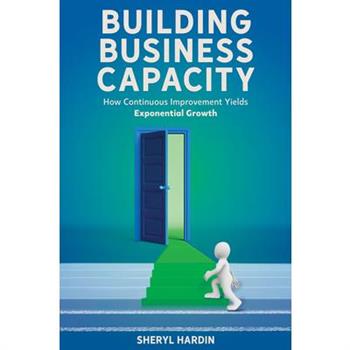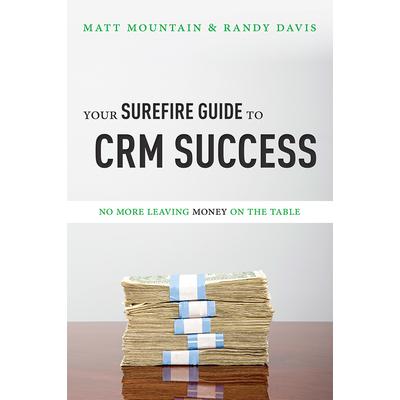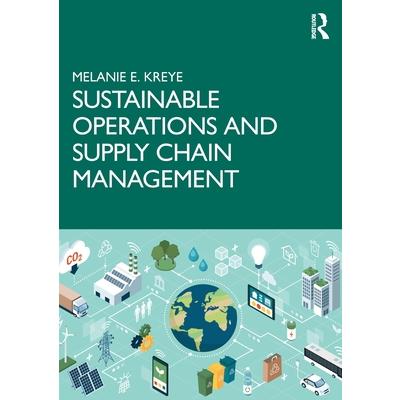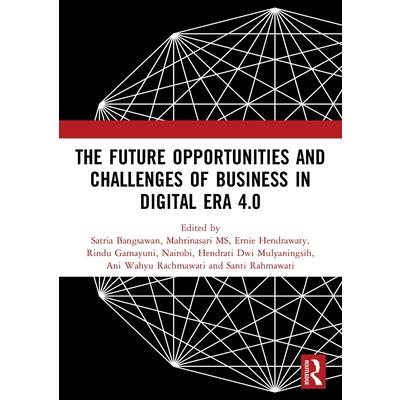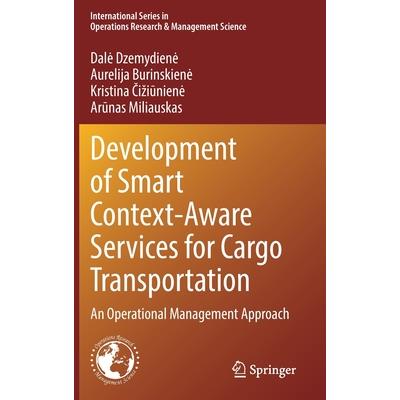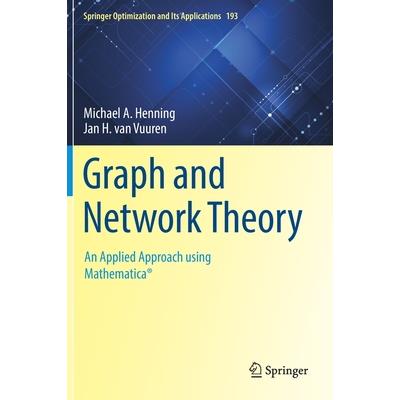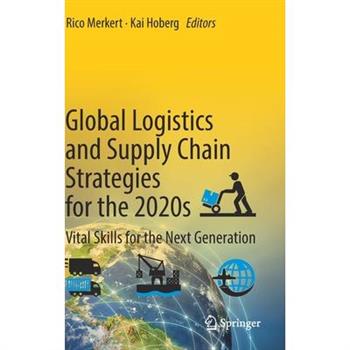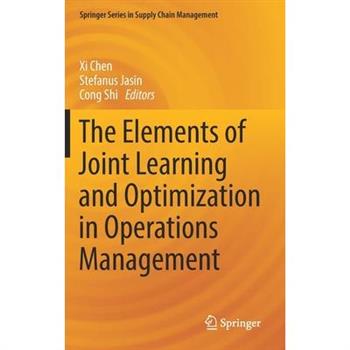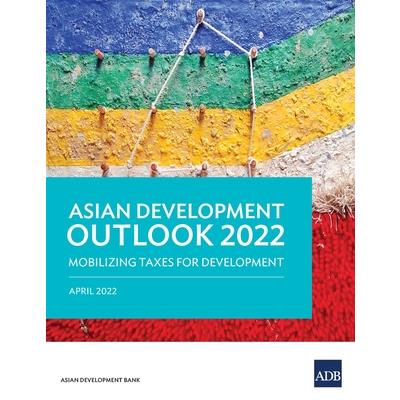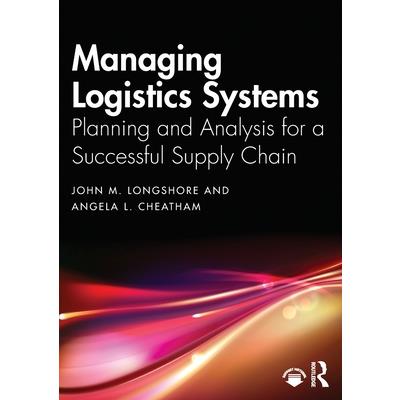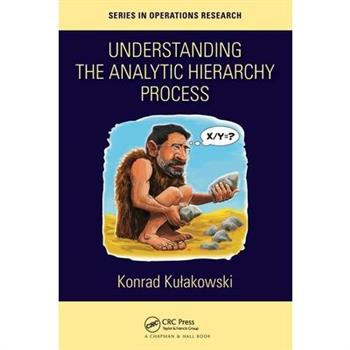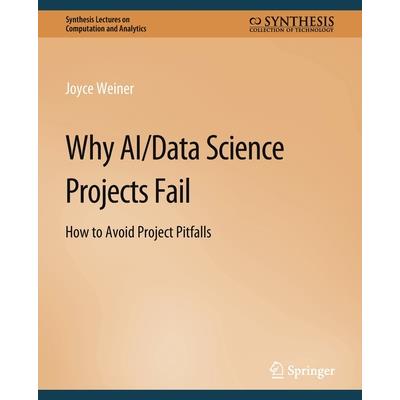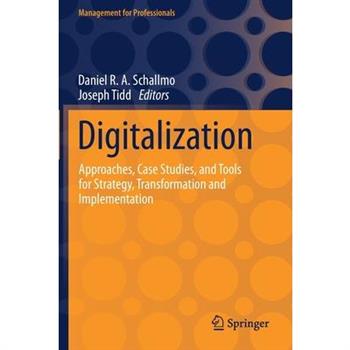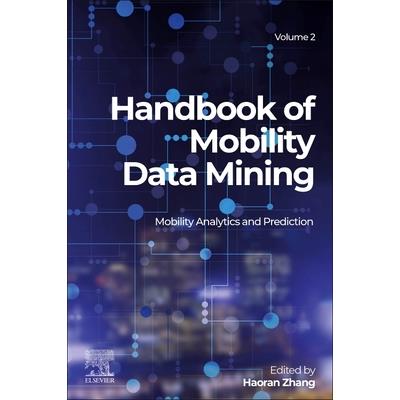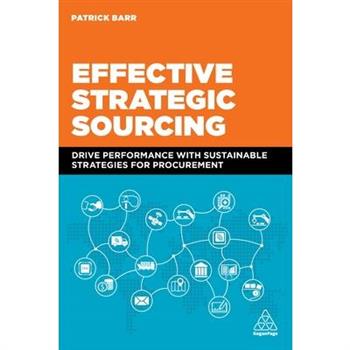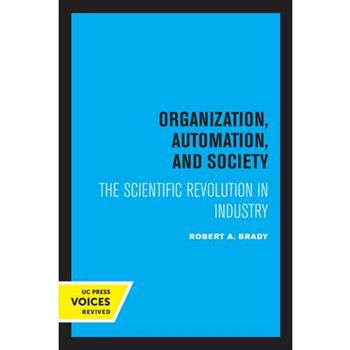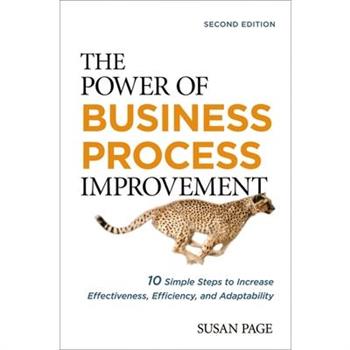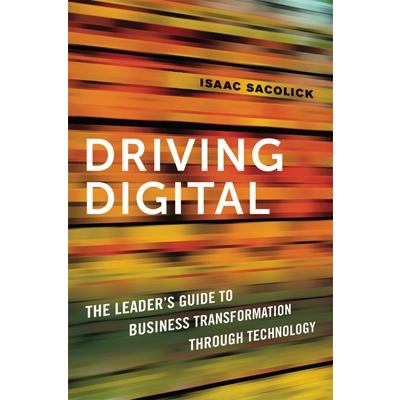Building Business Capacity
Change your future for the better by growing a small business fraction by fraction.Building Small Business Capacity provides a roadmap to help entrepreneurs achieve exponential growth through constant improvement. Learn to own your business and avoid having your business own you. Leverage proven best practices used to guide businesses for decades. Walk through useful exercises, checklists, questionnaires, forms, and templates designed to help entrepreneurs like you gain clarity into the most essential aspects of successfully doing business because you deserve success.Too many business books talk about why to go into business. Some may even tell you what you should do once you start. However too few answer the question of how to run your business while growing capacity. As it turns out there is a secret to success.Proven best practices are best practices for a reason. It does not matter if you run a 10-person business or a 10,000-person conglomerate. Adhering to best practices creates the infrastructure and environment necessary to grow capacity and be successful. Building Small Business Capacity allows you to take advantage of strategies and tools you can integrate into your business today to run more efficiently and effectively starting tomorrow.
The Development of Open Government Data
Providing a unique and enhanced theoretical and practical understanding of OGD and its usage, as well as proposing directions for OGD portals' future development in order to encourage citizens' OGD utilization, this is a must-read for researchers and policymakers examining the impact and possibilities of OGD.
Your Surefire Guide to Crm Success
Implementing Customer Relationship Management (CRM) Software Can Be One Of The Most Important Decisions A Growing Company Can Make. In Your Surefire Guide to CRM Success, Matt Mountain and Randy Davis- Salesforce.com gurus and industry leaders-explain how your business can properly implement this software to receive a high return on your investment. In this book, Matt and Randy discuss the following: - How to define your company's goals for proper CRM implementation - How to align employees to your vision - How to use software for not only sales but also marketing, operations, and customer service - How to use CRM to benefit your customers - How to continue maximizing and expanding your software in the future Many companies struggle in incorporating new software technology into their business model, but there is high potential for success if used correctly. If your company is considering the leap to CRM, this book is for you!
Patent Analytics
IntroductionPart I: Data. Emergence of Patent Big Data Chapter 1 Patent as Big Data? The journal of 230 years Patent, a living organism Patent as open data Chapter 2 Significant Points in the History of Patents 1836, The First Patent with Claims 1790, Start of the U.S. Patent System Again 1836, The Great Fire and Patent Numbering 1947, Genesis of Citation Chapter 3 Understanding Patent Data The Meaning of Patent Gazette Utility, Design Patents, and Trademarks The Butterfly Effect of Design Patent: Drill Bit's partial claim Claims, "Legally, Less is More!" Part II. Network: Patent Network Visualization Chapter 4 Prelude to the Era of Patent Data Visualization Unexpected Encounters Bigger, Faster and Stronger Timeline and Panoramic Viewpoint Chapter 5 Effective Visual Mapping of Patent Data One Dimensional Data Two-dimensional Data Multidimensional Data Chapter 6 The Power of Patent Citation Networks What is a Citation Worth? The Apple's Design Patent Network Knowledge Flow of Paten
Information Agglomeration of Japanese Auto Parts Suppliers
Sustainable Operations and Supply Chain Management
This book takes as its starting point the need to improve sustainability performance across the triple bottom line and reach global sustainable development goals. As such, it places sustainability at the heart of developing and explaining relevant theory, concepts and models in operations and supply chain management. Whereas previous textbooks on operations and supply chain management have focused on augmenting existing models of operations and supply chain management by simply adding on selected sustainability issues, this textbook places sustainability at the heart of operations and supply chain management. Sustainable Operations and Supply Chain Management consolidates the tools, concepts and methods of operations and supply chain management relevant for reaching sustainable development goals. This book includes not only descriptions of the theories and models but also practical cases based on the most recent developments in different industry sectors, including user electronics, healthcare, fashion and energy. Relevant student exercises are also included for use in the classroom or in personal study. This book provides an ideal introduction for Bachelor or Masters-level students, whether they are on general management and business degrees, or are focused on areas such as engineering management, technology management or sustainability management. Furthermore, university-level teachers and lecturers will find the material presented in this book a valuable basis for structuring their courses on operations and supply chain management in the context of sustainability.
Crowdsourcing for Innovation in Higher Education
Crowdsourcing for Innovation in Higher Education aims to transform the education space by enhancing existing methodologies and offering innovative possibilities to develop new pedagogical techniques.
Thought-leadership in Supply Chain Finance and Risk Management
This monograph contains six thought-leading contributions on various topics related to supply chain finance and risk management. The issue culminated out of a recent (May 14-16, 2021) mini-conference on "Supply Chain Finance & Risk Management" organized by The Boeing Center for Supply Chain Innovation (BCSCI), Olin Business School, Washington University in St. Louis. In "Quadratic Hedging and Optimization of Option Exercise Policies", Nicola Secomandi explores a model for optimizing option exercise policies under any given equivalent martingale measure and anchoring quadratic hedging to the resulting value of the policy. In "Operations Revenue Insurance", Paolo Guiotto, Andrea Roncoroni and Rom矇o T矇dongap propose a new framework for the optimal design of a financial instrument to hedge nonclaimable risk embedded by business and operating revenues. In "Crowdfunding Adoption in the Presence of Word-of-Mouth Communication", Fasheng Xu, Xiaomeng Guo, Guang Xiao and Fuqiang Zhang investigate a firm's optimal funding choice when launching a product in the market with word-of-mouth communication. In "Data Sharing in Innovations", Zhi Chen and Jussi Keppo discuss how the success of data-driven products depends on a firm's access to big data and the challenges of data collection and sharing in innovations using the autonomous vehicle industry as an example. In "Coordination Problems in Platform Markets Under Uncertainty", Hamed Ghoddusi presents a dynamic coordination problem under uncertainty that is common in platform markets and provides novel insights on this problem between two sides of a platform under uncertainty. In "Value Games", Matthew J. Sobel shows that insights and algorithms based on sequential games with a profit criterion and negligible bankruptcy risk can be adapted to maximize value.
The Future Opportunities and Challenges of Business in Digital Era 4.0
One of the main challenges faced by all entrepreneurs, is the need to growth. Growth is part of all organizations, it implies continuous growth of sales, purchases, number of employees, profit and thus the growth of the enterprise. Most innovations that are part of the organizations are derived from the internal organization. Industrial Revolution 4.0 provides both opportunities and challenges to all entrepreneurs to grow their business. The rapid development of technology and all digital aspects create opportunities of innovation in organizations. These proceedings provide details beyond what is possible to be included in an oral presentation and constitute a concise but timely medium for the dissemination of recent research results. It will be invaluable to professionals and academics in the field of business, entrepreneurship and economics to get an understanding of recent research developments.
Product Innovation Management
This book offers new insights into the complex set of activities and decisions of product innovation management. It provides concepts, methods, and tools that can help accelerate the introduction of successful products to the market in an increasingly competitive and changing business landscape. It also offers examples and case studies, and it is the result of more than 20 years of study, research, and consulting carried out by the two authors in the field of innovation management. The book discusses the demanding challenges of product innovation and offers practitioners guidance on how to respond to these challenges. It presents a three-level framework (the "innovation pyramid"), which reflects the core components of a firm's innovation capability: first, intelligence - absorbing information and knowledge from the outside world by looking beyond the familiar territories of the current market, technology, and customers; second, discovery - exploring opportunities for innovation through creative ideation and technology experimentation; and third, development - transforming opportunities into profitable new products and services.
Innovative, Creative and Sustainable Decision-Making in Changing Contexts
This monograph presents a unique and powerful bottom-up methodology for promoting and securing Sustainable Development Goals (SDGs) through innovative and creative decision-making and enactment in a wide variety of entrepreneurial innovation contexts. The authors identify four sustainable development enabling factors - (1) the presence of a trustworthy trading system for private and public goods; (2) the need for communication facilities for provenance exploration, authentication and demonstration; (3) the ability to build and support entrepreneurial innovation clusters bottom-up; and (4) the ability to establish caravanserai - and argue that these four factors can enable a strong bottom-up contribution to sustainability in all its forms. The authors investigate the changing contexts for decision support now emerging from the responses to pandemic-driven lockdowns, explore how in ancient history a set of sustainable development enabling factors was responsible for the enduring success of safe local and trans-national trading relationships, and reveal the role of these factors in recent history. They also provide a case study example of a coffee grower in Peru that successfully promotes the full set of sustainability-enabling factors through their own bottom-up innovative and creative activities. They discuss the opportunities arising from building a Sustainability-Enabling Decision Support (SEDS) platform and conclude by examining how success stories, mediated by a SEDS at the micro level can promote into new territories at the meso sand macro level guided by these sustainable development enabling factors.
Technology for Innovation
This book offers readers a simple, attractive, detailed knowledge of TRIZ and applied TRIZ, Technology for Innovation.The genius of Genrich Altshuller and his many followers created TRIZ by using the best practices of thousands of most talented engineers and scientists, which made our technological civilization. TRIZ is a science and philosophy for new system creation and existing systems development, and related problem-solving. TRIZ helps to create the best possible solutions for even the most critical problems. TRIZ is the best we have today on our Planet for industry, technology, business, and education development.As a life philosophy, TRIZ helps realize every human being's privilege and obligation to be a creative person and live a creative and successful life. Applied TRIZ, Technology for Innovation is the process of using all parts of TRIZ combined with other proven design development methods and best practices of effective project teams for a system (products, devices, technologies, services) development and problem-solving.Technology for Innovation is applying through individual innovation Roadmaps for project creation and problem-solving.The structure and content of the book follow the standards and requirements of the curriculum for Universities. This book is a textbook for students and teachers at the university and high school level and a practical handbook for any manager, engineer, and specialist involved in product and technology development. Of course, the author believes it will also be beneficial and enjoyable to anyone with an inquiring mind, irrespective of age, and specialty.
Our Special day, wedding guest book to sign (Hardback)
Perfect addition to any party, wedding, baby shower or bridal shower, a beautiful guest book for guests and visitors to sign. This book has a hardback cover with 70 pages for guests to leave wishes and comments, this book is 8.5 x 8.5 in size with a matt finish.
ISO 9001 for all Plumbing, Heating and AC Services
Digital Transformation
With the advent of digital technologies, society is reshaping itself radically. In the last decade, digital technologies have brought fundamental changes in the industry and business environment. The holistic socioeconomic and industrial changes are a result of general-purpose technology aspects of digital transformation, which are rare and have inherent capabilities of self-transformation to bring long-term benefits across the entire global business environment. After the steam engine, electric generator and printing press, the recent development of digital transformation has created an opportunity with extensive sustainable and incremental influence for disruption and renovation. However, the most important difference between digital transformation and the previous general-purpose technologies such as steam engines and electric generators is the pace of technology's penetration across the globe. To cope with the accelerated speed of global digitization, the digital transformation process should be accepted, adopted and adapted across society and business utilizing a multi-dimensional strategy. This book illustrates a strategic structure that covers Digital Challenges for Industries, Applicability for Digital Transformation, Digital Transformation Framework, People and Organization Structure, Capability Delivery Activities and Life Cycle Benefits. How will businesses embrace digital transformation? How will organizations formulate a digital transformation strategy? How will they invest in digital technologies? To answer these questions, a strategic structure is created which can provide guidelines to businesses to create a framework for digital transformation that includes strategy, process, governance and funding. The exponential growth in data capacity (storage, process and communication) due to rapid digitalization has created infinite opportunities and different dimensions to businesses. Digital platforms have enabled alternative business models by deconstructing the traditional value chains. Agile concepts driven by design thinking have brought innovative perspectives with an environment of boundless disruption. To run a company with sustainability and manage disruptions more consciously, the adoption of a digital platform with an appropriate strategy is the only viable option. Digital transformation (DX) goals and strategies should be in line with a company's business objectives. The strategic structure explained in the book is a global framework that can be adopted by any profit or nonprofit organization. Like any other transformational process, digital transformation has created structural tension between "old" and "new". In this tension, employees play a large role and their clarity of thought regarding the transformation process is of paramount interest. To overcome this tension, companies need to orient as learning organizations, which will provide opportunities for growth in an ambidextrous environment, embraced with a digital ecosystem. The book explains how the structural tension between old and new can be mitigated by effectively involving all stakeholders in the transformation process.
Management Mastery and Practice Series
Management Mastery and Practice Series is suited to a range of managers. You might be a newly promoted manager or about to step into a greater managerial role with increased responsibilities. Or perhaps you have been in a management position for some years' time but have had no formal management training, or you are an executive leader but have simply forgotten some of the basics of leading and managing yourself and others. Whichever length of time you have been managing, this series is to help you deal with people management including cultural diversity issues, systemic issues within the organization in which you work, and to develop effective communication and coaching skills, the ability to manage conflict, difficult situations, company politics and career development. The authors look at how to motivate staff and teams, understand motivation and demotivation, manage stress, build better performance with effective communications and well-run meetings, build great teams, and prepare leaders for the future. Each book includes theory, research, case studies, practical exercises, and tips on how to handle challenges - avoiding the pitfalls that can cause managers to fail. Your effectiveness as a leader-manager depends on what support you can expect from your staff, direct reports, and team members. This series will help you to build your skills and competence, developing your own unique signature as a leader and a manager. Being a leader-manager requires both skills of management and leadership. Everything you ever wanted to know about managing people but were afraid to ask covers essential aspects of both. Identifying and solving your most challenging people problems quickly and motivating your people to perform at their highest potential. Understanding when to lead and when to manage, taking a deeper dive into self-awareness and self-management, delegating to develop your team, broadening your range of communication skills in order to inspire and motivate people and managing difficult people and situations. However, the most important competence that is essential for stepping into being a leader-manager is that of self-awareness, conscious observation and understanding yourself at a deeper level to lead and manage people. It is critically important that you understand and know how your teams 'experience' you - because this is the path towards identifying what change is needed in terms of your own assumptions about yourself and others, and understanding your own thinking, feeling and behaviour at a deeper level. In this book there are clear guidelines, cases studies, practical exercises, and self-assessments to move you into greater competence as a leader-manager.
Christmas Pattern Envelope Liners Euro Flap 5x7 with Red & White Design
5x7 Envelope Liners with a Christmas Pattern Red and White Design.Euro Flap Style envelope liners for invitation envelopes.Just cut and attach each envelope liner and use the left over paper as a template.28 pack of 5"x7" envelope liners for a variety of occasions.
Watercolor Flowers Envelope Liners Euro Flap 5x7 with Floral Design
5x7 Envelope Liners with Watercolor Flowers Pink Purple Floral Design.Euro Flap Style envelope liners for invitation envelopes.Just cut and attach each envelope liner and use the left over paper as a template.28 pack of 5"x7" envelope liners for a variety of occasions.
Work That Makes Sense Operator-Led Visuality
This book presents the mechanics of implementing visuality on the value-add level known as Work That Makes Sense (WTMS). The step-by-step WTMS process described in this book teaches operators a proven method for translating information deficits into visual solutions that take the struggle out of their day-to-day work. As a result, operators transform their work area into a work environment that speaks--a work environment that, by design, shares vital information in the form of visual devices that help them perform their day-to-day work with precision and completeness. At the heart of this visual conversion approach is an element unique to Galsworth's paradigm called I-driven that recognizes that operators will pursue self-leadership in the company's improvement initiatives if they are given the opportunity to learn how to do so. Also recognized is the fact that this can only happen if associates are taught--and given the opportunity to learn and apply a new system of thinking. The author calls this new system visual thinking. This book provides that learning pathway, in detail, supported by hundreds of actual visual solutions, developed by operators who have followed that pathway and become visual thinkers for themselves--I-driven. They become self-leaders, in control of their corner of the world and able and willing to share their strengths with others. In this way, the WTMS process produces a deep and abiding change in the company's work culture that builds creativity and ownership. As a result, the organization's leadership framework widens to include operators. When effectively applied the WTMS process detailed in this book produces 15% to 30% improvement in local KPIs, including productivity, on-time delivery, quality, and costs; these figures are documented and presented in the pages of this book. Written for operators, this book includes a wealth of color photographs, the majority of which are visual solutions created by visual thinkers who have lived this process for themselves. All are fully captioned and thoughtfully described. The book also includes twelve tasks that managers implement in support that they seek on the operator level. WTMS teaches that visual devices translate information into exact behavior, embedding and sustaining precision through visual solutions. Precision is built in by the same operators who execute it. This is the heart of an I-driven visual enterprise. Once learned and operationalized, this paradigm allows the organization to take on any new improvement effort. Organizational alignment and teamwork have been redefined and operationalized.
Building and Solving Mathematical Programming Models
This book presents the construction and resolution of 50 practical optimization problems and covers an exceptionally wide range, including games-associated problems (Unblock Me, Sudokus), logistical problems, and problems concerning plant distribution, production, operations scheduling, management and resource allocation. The problems are divided into 5 difficulty levels. Problems in the first few levels are focused on learning the model construction methodology, while those in the last level include complex optimization environments. For each problem solution, the specific steps are illustrated, promoting reader comprehension. In addition, all the models are implemented in an optimization library, LINGO, their solutions have been analyzed and their correct construction has been verified. The book also includes a simple guide to implementing models in LINGO in a straightforward manner and in any input data format (text files, spreadsheets or databases). As anideal companion to the author's previously published work Modelling in Mathematical Programming, the book is intended as a basic tool for students of operations research, and for researchers in any advanced area involving mathematical programming.
Development of Smart Context-Aware Services for Cargo Transportation
With a focus on cargo transportation, this book addresses the development of approaches intended to secure an infrastructure of smart services to support the adaptive implementation of online multi-modal freight transport management processes. It discusses the development of multi-criteria decision-making components and their integration into the multi-layered computer-based information management of intelligent systems. Through detailed descriptions of various components of intelligent transport management systems, the book demonstrates how to develop the services needed in the right place and at the right time, and how to properly adapt to user needs, making necessary interventions to ensure the safety of the transportation process. Further, it describes the main ways to increase the autonomy and efficiency of user-vehicle interaction and shows how Information and Communications Technology (ICT) structural support for current and past situations in AI-based systems can help to anticipate future developments in freight transportation.
Big, Open and Linked Data
This book examines the recent evolution of the concept of data as an economic and managerial phenomenon. The author first describes and discusses open data and then introduces the concept of linked data, with a focus on assets for reuse. Furthermore, he addresses the main challenges of big data. Value is identified as the main incentive for the adoption of linked data; accordingly, the next two chapters study sources of data value from a macroeconomic and micro economic perspective, respectively. This contributes to the systematization of important issues at the crossroads of enterprise data and data sharing: data ownership, personal data, and data privacy. In turn, the book reveals the role of innovation as a main vehicle for creating value by unifying big, open, and linked data. It studies the ways in which value can be created, transferred, and captured in the form of business models, before the closing chapter verifies the data unification model by combining open and linked geographical data with big data from a major telecom company.
Graph and Network Theory
This textbook covers a diversity of topics in graph and network theory, both from a theoretical standpoint, and from an applied modelling point of view. Mathematica(R) is used to demonstrate much of the modelling aspects. Graph theory and model building tools are developed in tandem with effective techniques for solving practical problems via computer implementation. The book is designed with three primary readerships in mind. Individual syllabi or suggested sequences for study are provided for each of three student audiences: mathematics, applied mathematics/operations research, and computer science. In addition to the visual appeal of each page, the text contains an abundance of gems. Most chapters open with real-life problem descriptions which serve as motivation for the theoretical development of the subject matter. Each chapter concludes with three different sets of exercises. The first set of exercises are standard and geared toward the more mathematically inclined reader.Many of these are routine exercises, designed to test understanding of the material in the text, but some are more challenging. The second set of exercises is earmarked for the computer technologically savvy reader and offer computer exercises using Mathematica. The final set consists of larger projects aimed at equipping those readers with backgrounds in the applied sciences to apply the necessary skills learned in the chapter in the context of real-world problem solving. Additionally, each chapter offers biographical notes as well as pictures of graph theorists and mathematicians who have contributed significantly to the development of the results documented in the chapter. These notes are meant to bring the topics covered to life, allowing the reader to associate faces with some of the important discoveries and results presented. In total, approximately 100 biographical notes are presented throughout the book. The material in this book has been organizedinto three distinct parts, each with a different focus. The first part is devoted to topics in network optimization, with a focus on basic notions in algorithmic complexity and the computation of optimal paths, shortest spanning trees, maximum flows and minimum-cost flows in networks, as well as the solution of network location problems. The second part is devoted to a variety of classical problems in graph theory, including problems related to matchings, edge and vertex traversal, connectivity, planarity, edge and vertex coloring, and orientations of graphs. Finally, the focus in the third part is on modern areas of study in graph theory, covering graph domination, Ramsey theory, extremal graph theory, graph enumeration, and application of the probabilistic method.
Global Logistics and Supply Chain Strategies for the 2020s
Logistics and supply chain management is facing disruptive economic, technological and climate change developments that require new strategies. New technologies such as the Internet-of-Things, digital manufacturing or blockchain are emerging quickly and could provide competitive advantage to those companies that leverage the technologies smartly while managers that do not adopt and embrace change could be left behind. Last but perhaps most important for mankind, sustainability aspects such as low-carbon transportation, closed loop supply chains or socially-responsible supply chain setups will become essential to operate successfully in the future. All these aspects will affect logistics and supply chains as a whole as well as different functional areas such as air cargo, maritime logistics or sourcing/procurement. This book aims to dive into several of these functional topics to highlight the key developments in the next decade predicted by leading global experts in the field. It features contributions and key insights of globally leading scholars and senior industry experts. Their forward-looking perspectives on the anticipated trends are aimed at informing the reader about how logistics and supply chain management will evolve in the next decade and which academic qualities and skills will be required to succeed in the "new normal" environment that will be characterized by volatile and increasingly disrupted business eco-systems. Future scenarios are envisaged to provide both practitioners and students with insights that will help them to adapt and succeed in a fast changing world.
Supply Chain Resilience
Every global crisis highlights the strategic importance of industrial and non-profit supply chains for society. In terms of coping with unforeseen and unpredictable events, supply chain resilience enables the parties and networks involved to stay successful during and after the disruption. Furthermore, a resilient supply chain contributes to the sustainable competitive advantage of the entire value chain. Written by scholars and practitioners alike, this book not only puts forward a new framework for resilience in supply chain management, but also presents best practice cases from various areas and industries. As a particular highlight, it includes a Delphi study that gathers state-of-the-art insights from supply chain leaders. In addition to practical approaches, methods and tools, the book also offers food for thought on the future of supply chain resilience. As such, it offers a valuable resource for current and future managers in the public and private sector, aswell as researchers and students engaged in this field.
Must Know High School Geometry, Second Edition
A unique and effective way to learn Geometry--updated with the latest instruction and reviewMust Know High School Geometry provides a fresh approach to learning. As part of our Must Know series, this new edition makes sure what you really need to know is clear up-front. Rather than starting with goals to be met, chapters begin by telling you the most important concepts about the topic at hand--and then show you exactly how these concepts help you accomplish your goals.Written by expert geometry educators, Must Know High School Geometry, Second Edition provides updated lesson content and useful examples to help clarify each topic. Every chapter closes with reinforcing exercises to get you the practice you need to gain confidence. New features to this edition focus on extra support and helping you avoid common mistakes. In the end, you get everything you need to build your geometry skills quickly and painlessly.Features: More than 250 practice questions that parallel what you will find in your classwork and on examsBonus app that includes 100+ flashcards to reinforce concepts"Extra Help" and "Easy Mistake" features put the emphasis on how to improve and what pitfalls to avoidGeometry topics aligned to national and state educational standardsPractical examples throughout and an answer key with explanations make sure you understand the topicsConversational writing style and informative IRL (In Real Life) and BTW (By the Way) sidebarsA special section for teachers with tips and strategies on teaching the material and content-specific links and resources
The Elements of Joint Learning and Optimization in Operations Management
This book examines recent developments in Operations Management, and focuses on four major application areas: dynamic pricing, assortment optimization, supply chain and inventory management, and healthcare operations. Data-driven optimization in which real-time input of data is being used to simultaneously learn the (true) underlying model of a system and optimize its performance, is becoming increasingly important in the last few years, especially with the rise of Big Data.
Contracting in the New Economy
Today's business environment is constantly evolving, filled with volatility, uncertainty, complexity and ambiguity and driven by digital transformation, globalization, and the need to creating value through innovation. These shifts demand that organizations view contracting through a different lens. Since it is impossible to predict every what-if scenario in a transactional contract, organizations in strategic and complex partnerships must shift to a mindset of shared goals and objectives built upon a strong foundation of transparency and trust, working together to mitigate risk much better than merely shifting risk to the weaker party. Contracting in the New Economy helps you to not only develop this mindset - but also offers the practical tools needed to embrace the social side of contracting, enabling your organization to harness the value creating potential of formal relational contracts. Briefly sharing the theoretical foundations that prove relationalcontracting works, it goes well beyond theory by providing powerful examples of relational contracting principles in practice. In addition, the authors provide a practical and proven approach for helping you to put relational contracting theory into practice for your own relationships. First by providing a framework for approaching any contracting situation and helping organizations finding the best contract model for each situation. And then by sharing five proven steps you can take to create an effective relational contract for you own strategic and complex business relationships. For anyone involved in developing contracts --lawyers, in-house counsels, contract managers, C-level managers, procurement officers, and so on -- this book will empower you to create powerful cooperative alliances that will help you reach --and surpass -- your business goals in today's dynamic new environment.
Asian Development Outlook (Ado) 2022
This report outlines economic prospects in developing Asia amid global turbulence and lingering pandemic risks. It discusses the implications of school closures and the invasion of Ukraine, and explores mobilizing taxes for development. Developing Asia's outlook remains positive, with growth of 5.2% expected in 2022 and 5.3% in 2023. Downside risks include spillover from geopolitical tensions, such as via higher-than-expected commodity prices. The Russian invasion of Ukraine has upended the global economic outlook and greatly amplified uncertainty for a world economy still contending with COVID-19. Aggressive monetary policy tightening in the United States could lead to financial instability. In the medium term, scarring from the pandemic poses significant risks, including learning losses from continued school closures that could worsen economic inequality. The region's economies urgently need to mobilize fiscal resources to restore the health of public finances and build a more inclusive and sustainable future. Opportunities to strengthen revenue will depend on specific circumstances, but more efficient value-added tax and better-optimized tax incentives hold promise for many economies. Strengthening personal income and property taxes can raise additional revenue and make tax systems more progressive. Significant opportunities exist to expand the use of tax and other fiscal instruments to tackle environmental and health priorities while raising revenue.
Managing Logistics Systems
This textbook introduces logistics from a broad perspective to include all activities throughout the product and service life cycle pertaining to supply chain and logistics management, the physical supply and distribution of products, and the corresponding maintenance and support. It recognizes the mutual interdependence of the major functional areas of the organization including marketing, production, and finance. The emphasis throughout the text is on logistics in the context of a total business system design process. It views the business as a "system", managing logistics within that system, and thus transforming their Supply Chain. Pedagogy to aid learning is incorporated throughout every chapter, with chapter objectives, case studies, and concept checks. This text is intended for both upper-level undergraduate and lower-level graduate students in both Business and Engineering on logistics and supply chain tracks. It can also serve as a reference for practitioners actively engaged in day-to-day management of logistics and supply chain activities. Supplementary online resources include an instructors' manual, chapter-by-chapter PowerPoint slides, glossary, and a test bank of exam questions.
Understanding the Analytic Hierarchy Process
The aim of Understanding Analytic Hierarchy Process book is to provide the reader with a critical guide to AHP. In this book, the AHP method is considered primarily as a mathematical technique supporting the decision-making process.
Why AI/Data Science Projects Fail
Recent data shows that 87% of Artificial Intelligence/Big Data projects don't make it into production (VB Staff, 2019), meaning that most projects are never deployed. This book addresses five common pitfalls that prevent projects from reaching deployment and provides tools and methods to avoid those pitfalls. Along the way, stories from actual experience in building and deploying data science projects are shared to illustrate the methods and tools. While the book is primarily for data science practitioners, information for managers of data science practitioners is included in the Tips for Managers sections.
Digitalization
What do vehicle manufacturers like Rosenbauer, logistics companies like DB Schenker, a compressor manufacturer such as Bauer, an elevator manufacturer such as ThyssenKrupp, and a hygiene goods manufacturer like Hagleitner all have in common? They all use the potential of digitization to offer smarter and faster services to customers and to actively shape the digital transformation of their business models. This book provides valuable insights with concise and established guidelines for the successful digital transformation of business models. Professionals in management, strategic planning, business development, as well as researchers and students from the fields of innovation/technology management, strategic management, and entrepreneurship would particularly benefit from this book.
Handbook of Mobility Data Mining, Volume 1
Handbook of Mobility Data Mining, Volume One: Data Preprocessing and Visualization introduces the fundamental technologies of mobile big data mining (MDM), advanced AI methods, and upper-level applications, helping readers comprehensively understand MDM with a bottom-up approach. The book explains how to preprocess mobile big data, visualize urban mobility, simulate and predict human travel behavior, and assess urban mobility characteristics and their matching performance as conditions and constraints in transport, emergency management, and sustainability development systems. The book contains crucial information for researchers, engineers, operators, administrators, and policymakers seeking greater understanding of current technologies' infra-knowledge structure and limitations. Further, the book introduces how to design MDM platforms that adapt to the evolving mobility environment, new types of transportation, and users based on an integrated solution that utilizes sensing and communication capabilities to tackle significant challenges faced by the MDM field. This volume focuses on how to efficiently pre-process mobile big data to extract and utilize critical feature information of high-dimensional city people flow. The book first provides a conceptual theory and framework, then discusses data sources, trajectory map-matching, noise filtering, trajectory data segmentation, data quality assessment, and more, concluding with a chapter on privacy protection in mobile big data mining.
Handbook of Mobility Data Mining, Volume 2
Handbook of Mobility Data Mining, Volume Two: Mobility Analytics and Prediction introduces the fundamental technologies of mobile big data mining (MDM), advanced AI methods, and upper-level applications, helping readers comprehensively understand MDM with a bottom-up approach. The book explains how to preprocess mobile big data, visualize urban mobility, simulate and predict human travel behavior, and assess urban mobility characteristics and their matching performance as conditions and constraints in transport, emergency management, and sustainability development systems. The book introduces how to design MDM platforms that adapt to the evolving mobility environment and new types of transportation and users. This helpful guide provides a basis for how to simulate and predict mobility data. After an introductory theory chapter, the book then covers crucial topics such as long-term mobility pattern analytics, mobility data generators, user information inference, Grid-based population density prediction, and more. The book concludes with a chapter on graph-based mobility data analytics. The information in this work is crucial for researchers, engineers, operators, company administrators, and policymakers in related fields, to comprehensively understand current technologies' infra-knowledge structure and limitations.
Handbook of Mobility Data Mining, Volume 3
Handbook of Mobility Data Mining: Volume Three: Mobility Data-Driven Applications introduces the fundamental technologies of mobile big data mining (MDM), advanced AI methods, and upper-level applications, helping readers comprehensively understand MDM with a bottom-up approach. The book explains how to preprocess mobile big data, visualize urban mobility, simulate and predict human travel behavior, and assess urban mobility characteristics and their matching performance as conditions and constraints in transport, emergency management, and sustainability development systems. The book contains crucial information for researchers, engineers, operators, administrators, and policymakers seeking greater understanding of current technologies' infra-knowledge structure and limitations. The book introduces how to design MDM platforms that adapt to the evolving mobility environment--and new types of transportation and users--based on an integrated solution that utilizes sensing and communication capabilities to tackle significant challenges faced by the MDM field. This third volume looks at various cases studies to illustrate and explore the methods introduced in the first two volumes, covering topics such as Intelligent Transportation Management, Smart Emergency Management--detailing cases such as the Fukushima earthquake, Hurricane Katrina, and COVID-19--and Urban Sustainability Development, covering bicycle and railway travel behavior, mobility inequality, and road and light pollution inequality.
Effective Strategic Sourcing
Modern supply chains are enjoying new opportunities for innovation and growth. Build competitive advantage, optimize cost and encourage ethical business practices with the process of strategic sourcing. Effective Strategic Sourcing brings together tools and techniques to develop comprehensive sourcing strategies and drive performance and margin improvement in an ethical, environmentally responsible way. From supplier research and risk analysis to category management and cost modelling, it answers key questions around make versus buy, outsource versus insource and RFI versus RFP. Top supply chain leaders from a range of industries offer their insights and experience in interviews covering the challenges inherent in modern strategic sourcing. The book also focuses on how supply chain and procurement professionals can address sustainability concerns by thinking globally and acting locally and aiming for net-zero carbon footprint sourcing. Learn from the experts and thrive in the 'new normal' with this essential guide to maximising the benefits of strategic sourcing.
Learning at Speed
SHORTLISTED: getAbstract International Book Awards 2023 - Learning Impact CategoryThe world is changing fast, but are you? Do you know where the skills gaps are in your organization? Do you know how to fill these gaps? Most importantly, can you make the necessary changes quickly enough to succeed? Learning at Speed is a practical book which brings together the best from lean and agile methodologies to show how they can be applied to learning and development (L&D) to improve individual and organizational performance. This provides a people development framework which can be used to deconstruct a learning strategy and optimise each element for improved results. It shows how to identify learning barriers and possible solutions, leverage company data to understand learning needs and how to assess the most effective learning resources and delivery channels. Crucially, Learning at Speed shows how to track metrics that matter, get the most from your budget and how to build a business case to get stakeholder buy-in. Understanding how to continuously upskill and reskill a workforce at speed will ensure that organizations can stay ahead of the competition. Supported by templates, worksheets, case studies, examples and practical advice, this book is the practical guide that shows learning and development (L&D) professionals how to achieve this.
Organization, Automation, and Society
This title is part of UC Press's Voices Revived program, which commemorates University of California Press's mission to seek out and cultivate the brightest minds and give them voice, reach, and impact. Drawing on a backlist dating to 1893, Voices Revived makes high-quality, peer-reviewed scholarship accessible once again using print-on-demand technology. This title was originally published in 1961.
Organization, Automation, and Society
This title is part of UC Press's Voices Revived program, which commemorates University of California Press's mission to seek out and cultivate the brightest minds and give them voice, reach, and impact. Drawing on a backlist dating to 1893, Voices Revived makes high-quality, peer-reviewed scholarship accessible once again using print-on-demand technology. This title was originally published in 1961.
Sustainable Manufacturing for Industry 4.0
Industry 4.0 promises tremendous opportunities for industries to go green by leveraging virtual physical systems and internet driven technologies for a competitive advantage and set the platform for the factory of the future and smart manufacturing. The book provides measures that can be adopted by practicing design engineers, to develop products that will be sustainable in all stages of its life cycle. It helps organizations in implementation of sustainable manufacturing practices and formulation of critical strategies in their transition towards Industry 4.0., and the book will provide insights on ways of deploying these practices in correlation with the environmental benefits mapped to support the practicing managers and stakeholders. Features Assists in the understanding of the shifting paradigm in manufacturing sector towards smart and sustainable practices Showcases contemporary technologies and their insurgence in existing industries Focuses on need, applications, and implementation framework for Industry 4.0 Encapsulates all that one has to learn about sustainability and its transformation in Industry 4.0 Real time case studies are presented
The Power of Business Process Improvement
This book provides business professionals with the clearest, easiest roadmap to achieving highly effective departments and organizations.Are you baffled by how your department can keep making the same mistakes? Do you feel you have been climbing an unending, uphill battle trying to focus your employees' limited time on more valuable work? These obstacles are so common in business that the solution to getting past them even has a name--business process improvement (BPI). Thankfully, though, you don't have to be a BPI expert to resolve these situations and find the results your business needs to find success again.Written by experienced process analyst Susan Page, The Power of Business Process Improvement is the resource you need to find a simple, bottom-line approach to process improvement work. By implementing its proven 10-step method, you will be able to: Eliminate duplication and bureaucracyControl costsEstablish internal controls to reduce human errorTest and rework the process before introducing itImplement the changesComplete with software suggestions, quizzes, a comparison of industry improvement methods, and examples to help you apply the ideas, The Power of Business Process Improvement is your solution to turning your business into the well-oiled machine you know it can be.
Driving Digital
Organizations are in a race to become a digital enterprise. For those leading their company's tech-driven change, this guide will help you along the way.Every business makes plans for updating products, technologies, and processes. However, that is simply not enough for a twenty-first century company. While the pressure is intense, you can create a clear path forward using guidance from this book.In Driving Digital, business technology executive Isaac Sacolick shares the lessons he's learned over the years as he has successfully spearheaded multiple transformations and helped shape digital-business best practices. You no longer have to blindly trek through the mine field of their company's digital transformation.In this thoroughly researched one-stop manual, Sacolick teaches you how to: Formulate a digital strategyTransform business and IT practicesAlign development and operationsDrive culture changeBolster digital talentCapture and track ROIDevelop innovative digital practicesPilot emerging technologiesYour company cannot avoid the digital disruption heading its way. The choice is yours: Will this mean the beginning of the end for your business, or will your digital practices be what catapults you into next-level success?
Minding My Business
Fun Colorful Notebook Suitable For Most Ages, With A Fun Message.




